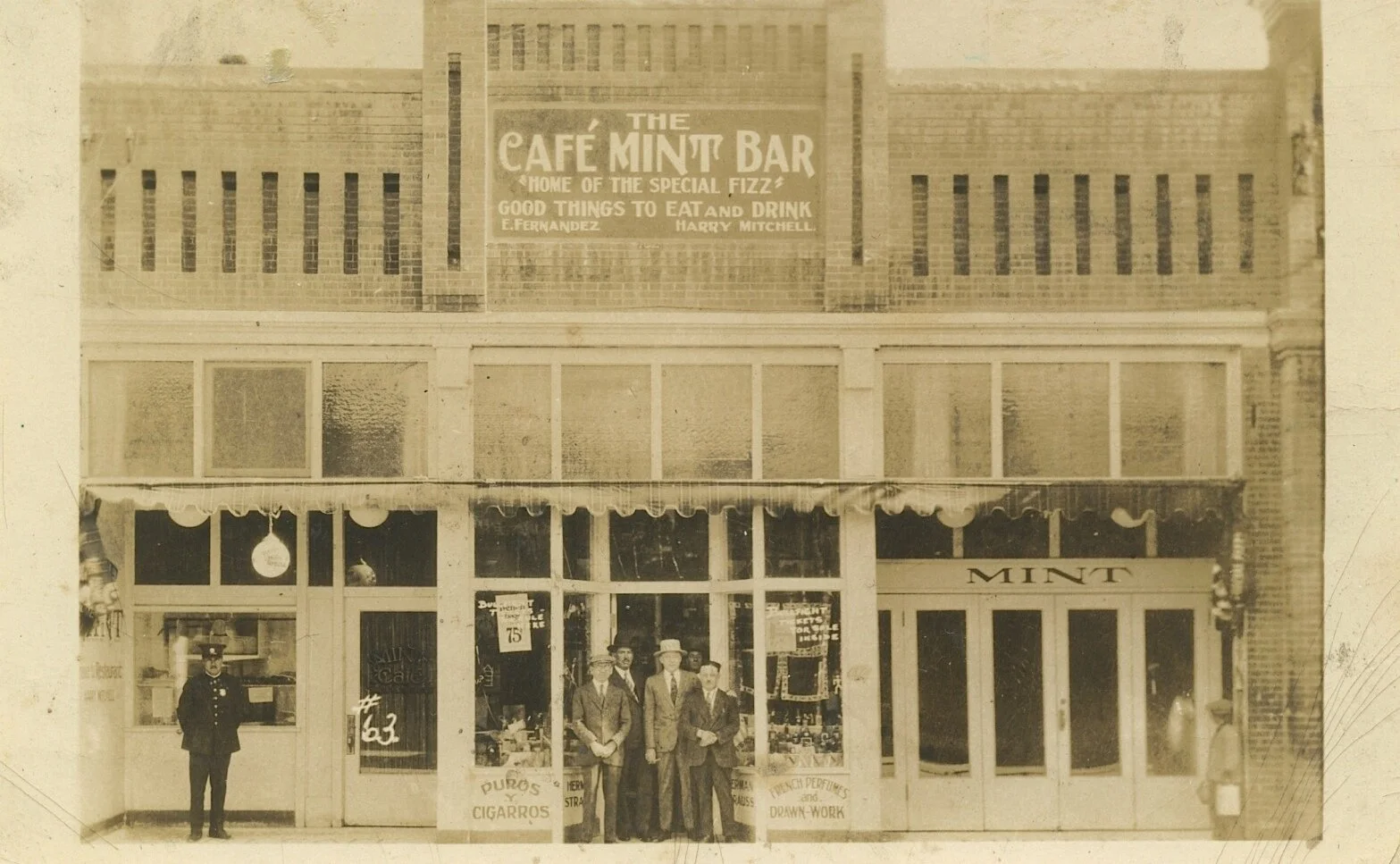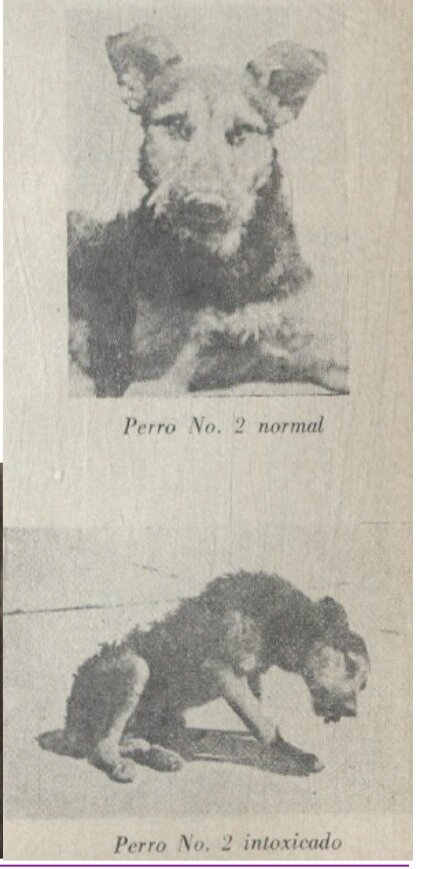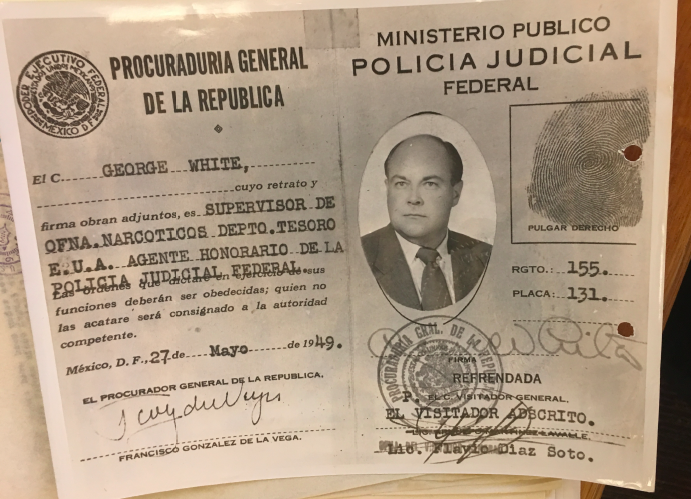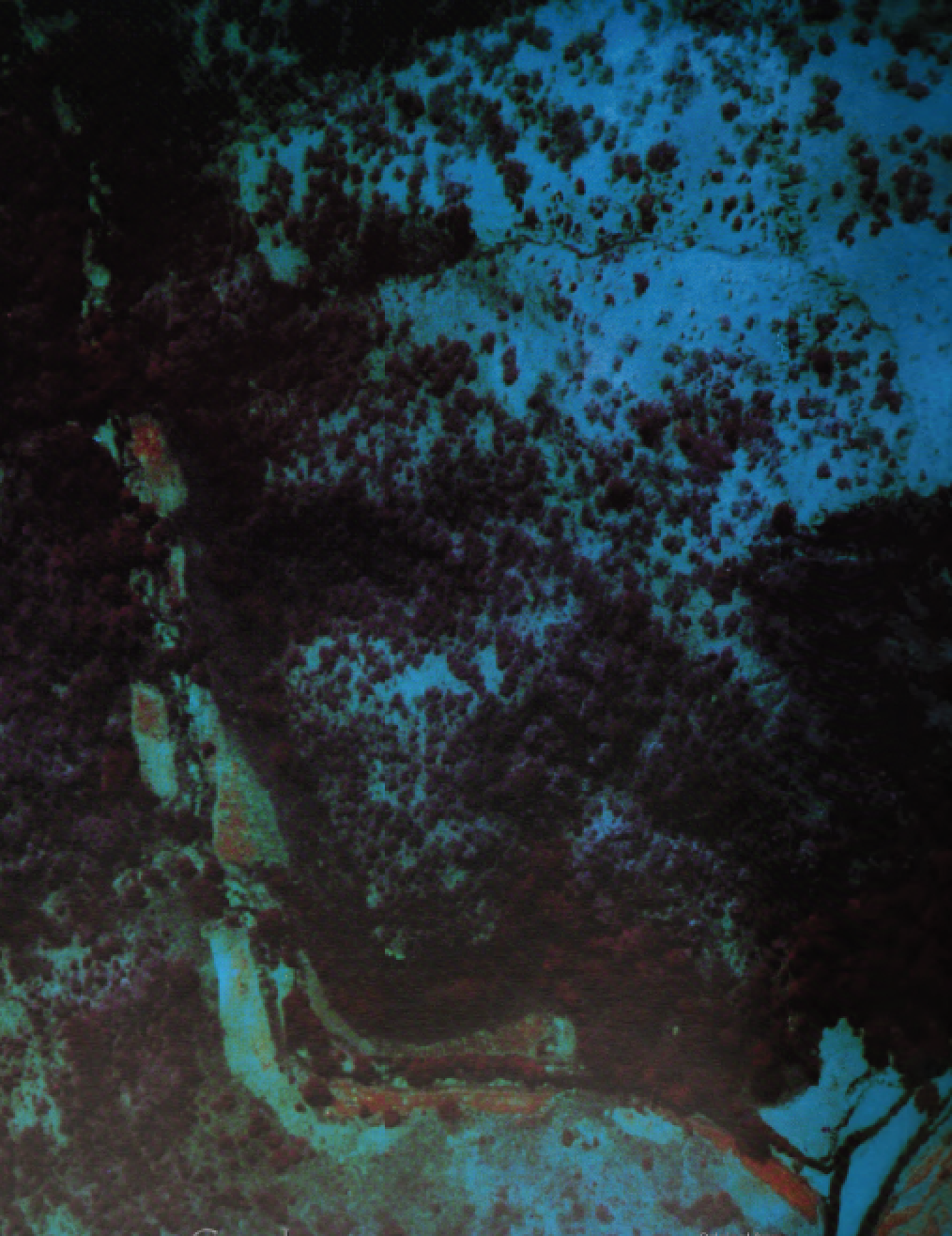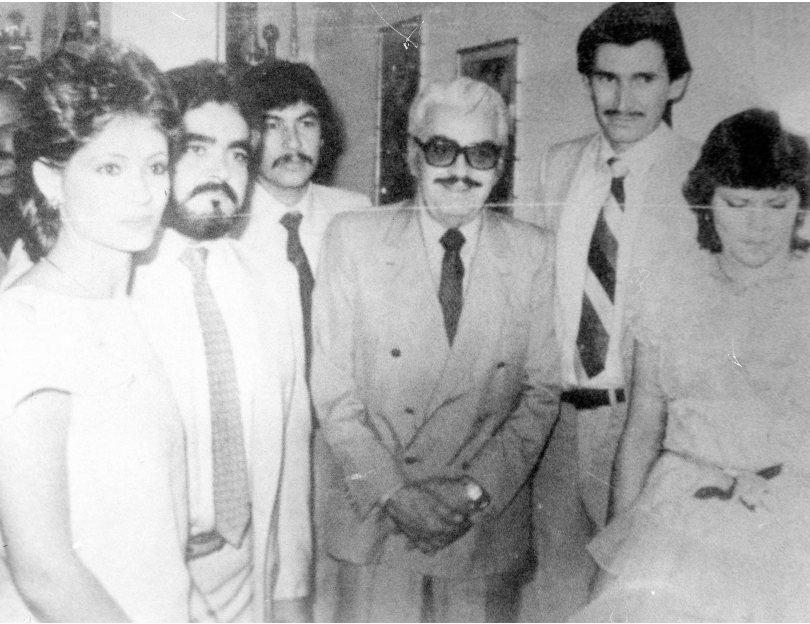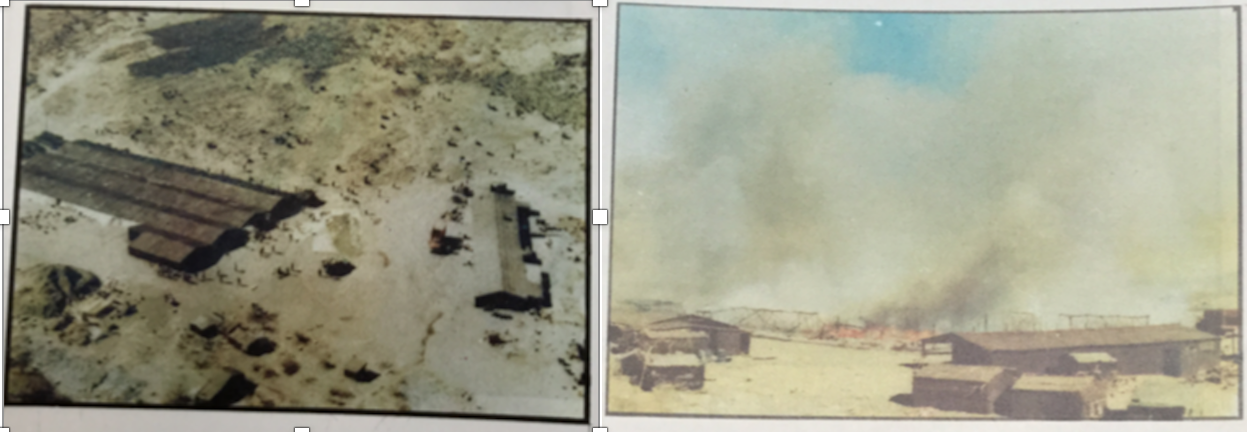In the course of researching my work on the Mexican drug trade I have visited dozens of archives and private collections. I thought it might be interesting to share some of the photographs I found with readers.
There are loads so I have organized them by period
PLEASE NOTE. ONE OF THE PHOTOS IN THE 1960-1980 SECTION IS VERY GRAPHIC AND VIOLENT. IT MAY BE TRIGGERING FOR SOME.
1900-1920
1920-1940
1940-1960
1960-1980
1980-2000
1900-1920
La Herbolaria, El Imparcial, 23 February 1903
Herbolarias or traditional healers were held to be ill-educated indigenous women prone to poisoning their clients. Their use of marijuana simply confirmed this prejudice.
Don Chepito
Don Chepito was a comic invention of the great Mexican cartoonist José Guadalupe Posada. An inveterate weed smoker he was always getting into trouble.
Esteban Cantú
Esteban Cantú was governor of Baja California from 1915-1920. Initially he taxed smoking opium openly. After the Americans complained, he cancelled the policy. Yet he continued to charge drug traffickers a fee in secret to turn a blind eye to their businesses.
Building schools with drug money
Esteban Cantú’s decision to keep charging drug traffickers, albeit surreptitiously, increased the state’s coffers. With the money he built roads and schools, including Mexicali’s rather grand Escuela Cuauhtémoc.
Selling it to the gringos
But Cantú was smart enough not to let this on to the Americans. Instead after officially renouncing opium taxation, he pushed his anti-drug credentials north of the border.
1920-1940
Bernabé Hernández
Bernabé Hernández was a key wholesaler in the early 1920s drug trade. He was also a former member of the famed Grey Automobile armed robbery gang.
Valentín Quintana
Valentín Quintana was a famous 1920s detective. He also protected the first large-scale Mexican drug ring.
A Chinese opium smoker, Mexico City c. 1925
Some Chinese immigrants to Mexico kept up the habit of smoking opium . It was used to relieve pain, to relax, and to socialize.
An anti-Chinese cartoon, 1923
Mexicans - like Americans and Europeans - blamed the Chinese for bringing the cultivation of opium poppies to their country. Mexicans claimed the drug made Chinese immigrants lazy, irrational and sexually predatory. In fact, most Chinese immigrants used smoking opium as a social drug or to quell pain.
Enrique Fernández outside his Café Mint Bar
The famed Ciudad Juárez trafficker Enrique Fernández outside his famous Café Mint Bar. It was later burnt down by government thugs. Courtesy Arreola Postcard Collection.
Drugs confiscated from Mexico City dealer, Lola la Chata, c. 1930
Before around 1944, when Mexican labs started to produce morphine and heroin, most of the narcotics on sale in Mexico were imported from pharmaceutical companies in Europe.
Leopoldo Salazar Viniegra
Leopoldo Salazar Viniegra, Mexico's radical drug tsar in 1938 and 1939, was also a keen hiker. He attempted to overturn popular ideas about marijuana and start state-run morphine clinics. Courtesy Archivo Dr. Salazar.
Drugged dog
During the late 1930s one of Leopoldo Salazar Viniegra's students investigated marijuana's effects on dogs and even invented a special “dog smoking box”. From Jorge Segura Millán, Marihuana, (Mexico City: Costa-Amic, 1972 edn). Courtesy Costa-Amic Editores.
Morphine clinic, Mexico City, 1940
On Leopoldo Salazar Viniegra’s advice the government established a state-run morphine dispensary in 1940. The Americans eventually forced the Mexicans to close it down. La Prensa, 3 May 1940. Material kindly given by the Fototeca, Hemeroteca y Biblioteca Mario Vásquez Raña/Organización Editorial Mexicana S.A de C.V.
1940-1960
FBN agent Salvador Peña (left) and Mexican health inspectors
Salvador Peña (left) with his Mexican co-workers. National Archives and Records Administration, RG170, Box 23.
Mexican health inspector, c. 1944
Some of the earliest opium poppy fields were located in Sonora. Here a Mexican health inspector examines a small field. AGN, DFS, Caja 368 bis exp. 2-17-1944.
Opium poppy irrigation, Sinaloa c. 1944
By the 1940s some Sinaloa growers had built makeshift irrigation networks to water their poppies. AGN, DFS, Caja 368 bis exp. 17-2-1944.
The first opium poppy inspectors
During the late 1940s U.S agents, Mexican health police, and soldiers descended on the mountains of Sonora, Sinaloa, Chihuahua and Durango in the search for opium poppy plantations. AGN, DFS, Caja 368 bis exp. 17-2-1944.
Opium poppy fields, Sinaloa, c. 1944
Some of the opium poppy fields in Sinaloa were hectares in size. AGN, DFS, Caja 368 bis exp. 17-2-1944.
Rodolfo Váldez Váldez aka The Gypsy (I)
Rodolfo Váldez Váldez aka The Gypsy (right) famed Sinaloa gunman, peasant killer, and assasin of Governor Loaiza. From Anonymous, La Vida Accidentada y Novelesca de Rodolfo Valdez el Gitano, (El Correo de la Tarde, 1949).
Rodolfo Valdéz Valdéz aka The Gypsy (II)
Rodolfo Valdéz Valdéz aka The Gypsy in prison attire. He was arrested for the murder of Sinaloa governor, Rodolfo Loaiza. Some claimed that the murder was linked to ongoing squabbles over land. But many whispered that drug traffickers had hired the Gypsy in order to stop Loaiza charging unreasonable costs for protecting the trade.
The two faces of the mafia in Mexico
In the 1940s Max Cossman, an LA mobster, came to Mexico to set up a drug pipeline to the U.S. He was caught in 1949 (left). He then escaped, underwent plastic surgery and was caught again in 1951 (right).
Max Cossman’s Mexican wife, María Moctezuma de Cossman
In 1949 Max Cossman managed to escape jail while on day release to see his wife, who had just given birth. He escaped through the window while the guards waited outside. His wife, María, would also try to help him escape again when he was recaptured in 1951. She was subsequently imprisoned on drug charges as well.
Enrique Diarte and his eventual grave
Enrique Diarte was a new breed of trafficker. Born in the Sinaloa town of Mocorrito in 1905, he moved up to Tijuana, joined the police, and started to use his position to bring up opium from his home state. He was murdered in 1944, most probably by mafia man, Max Cossman.
Ignacio Jasso aka La Nacha
Ignacio Jasso aka La Nacha was Ciudad Juarez's principal drug vendor from the 1930s to the 1960s. Here she is during one of her regular jail stints. National Archives and Records Administration, RG170, Box 23.
Ignacio Jasso aka La Nacha
Here is the first picture we have of La Nacha. It is attached to one of her late 1920s drug busts.
La Nacha reading the bible
Ignacio Jasso aka La Nacha often claimed to be an evangelical Christian to avoid longer jail sentences or exile. Here she is reading her bible in prison.
American Drug Police in Mexico
After U.S. drug tsar, Harry Anslinger, put pressure on Mexico to cooperate, the Mexicans agreed to almost all the U.S. proposals. From 1947 they put the PJF in charge of prosecuting drug crime. From then on, Anslinger’s agency - the FBN - worked closely with the PJF. This is FBN agent, George White, who was given a PJF badge or charola.
Diario de un Narcotraficante
Diario de un Narcotrafiante was Mexico's first narco-novel. It was actually rather thinly veiled non-fiction. From A. Nacaveva, Diario de un Narcotraficante (Mexico City: Costa-Amic, 1967 edn). Courtesy Costa-Amic Editores. Originals now go for over £3000.
María Dolores Estévez Zuleta aka Lola la Chata
Lola la Chata was the leading drug peddler of Mexico City from the 1940s to the 1950s. She was a legend. William Burroughs, who never met her, described her as “three hundred pounds cut from the mountain rock of Mexico”.
1960-1980
Lazáro Mejia García aka El Barril Chico, c. 1963
After Lola la Chata was arrested in 1954, the Mejia Garcia family led by Lázaro took over a lot of Mexico’s City’s drug trade. It was a family business. He was assisted by his sister, Agustina and his brother Manuel. He was arrested multiple times for robbery, assault, and narcotics. But he was eventually put away in 1971 for “corruption of minors”. He was linked to the Jacarandas bar/brothel and its underage sex workers.
The police that ran the Sonora drug trade in the 1970s
Francisco Sahagún Baca (center left) and Francisco Luken Aguilar (center right) were rumored to run the Sonora drug trade, charging traffickers for taking narcotics through Hermosillo and Nogales into the U.S. Sahagún would later become the right-hand-man of El Negro Durazo.
A marijuana press, c. 1969
Marijuana traffickers soon learned to soak marijuana in soda or sugar solution and then press and package it. This is a hydraulic marijuana press from the 1960s.
José Luis Terán, kingpin of Magdalena de Kino
In the early 1970s José Luis Terán was the head of trafficking operations in Magdalena de Kino. The DEA never got a photograph of him. They nearest they got was an artist’s impression.
House of a drug trafficker, Magdalena de Kino
In the 1970s José Luis Terán, a former goods smuggler or fayukero, switched to trafficking heroin and marijuana. The switch made him a very rich man and he ran the Sonora town of Magdalena de Kino in the early 1970s.
Mexican Assassin (1978)
In the early 1970s Richard H. Blum was sent to Mexico as part of a U.S. fact-finding mission. He worked with the PJF to uncover state police corruption and drug traffickers. When he returned he wrote Mexican Assassin, a not very good and thinly veiled account of his adventures. The kingpin in the novel is largely based on Magdalena de Kino trafficker, José Luis Terán.
Ruperto Beltrán Monzón (I)
Ruperto Beltrán Monzón was the El Chapo of the 1960s. Born, like El Chapo in Badiraguato, he rose to become Mexico’s major sinsemilla weed exporter. U.S. smugglers knew him as “Papa Grande”
Ruperto Beltrán Monzón (II)
Ruperto Beltrán Monzón used the alias Antonio García Rodriguez. Here he is after being caught and identified in Mexicali in the early 1960s.
Ruperto Beltrán Monzón’s wife, María García Angulo (center)
Ruperto Beltrán Monzón’s wife, Maria Garcia Angulo was a major heroin chemist in her own right. She was also from Sinaloa but based in Guadalajara. She was caught together with her gang in 1974. She declared at the time that her husband was dead. (He was not). The arresting officer was Francisco Sahagún Baca, a PJF commander with a notorious reputation for fine dressing, corruption, and murder.
Heroin Lab, Culiacán
During the 1970s Mexican heroin laboratories were getting bigger and more sophisticated. This lab, located in Culiacán, was raided in 1975 and contained 280 lbs of heroin and 132 lbs of crude opium. Drug Enforcement magazine, Winter 1975-1976.
Hippies in Huautla de Jiménez
In the 1960s U.S. hippies descended on Mexico in search for drugs and experiences. Many arrived at the small village of Huautla de Jiménez, which had become famous for indigenous use of magic mushrooms.
Operation Intercept, 1969
Operation Intercept was a massive U.S. stop-and-search campaign on the Mexican border. It was designed to force Mexico to clamp down on drug production.
Ramón Virrueta Cruz
Ramón Virrueta Cruz was appointed head of the state police of Sinaloa in 1969. He went after the protected traffickers like the family of Eduardo “Lalo” Fernández. He was murdered by traffickers for the campaign. His killing kick-started a round of tit-for-tat killings.
Rodolfo Váldez Váldez aka The Gypsy (III)
By the 1960s, Rodolfo Valdéz Valdéz aka “the Gypsy” had left jail and got involved in the drug trade. In 1969 he was shot and arrested in a sting in Guadalajara. It was part of tit-for-tat attacks that followed the Virrueta killing.
Rodolfo Váldez Váldez aka The Gypsy (IV)
When the police shot and arrested Rodolfo Valdéz Valdéz aka “the Gypsy”, they found kilos of heroin in the back of his car.
Robert and Helen Hernández
During the early 1970s Robert and Helen Hernández ran the Tijuana heroin trade from their base in Tijuana’s La Mesa prison. Robert had been blinded in a 1968 shooting. From then on he allegedly carried a grenade with him at all times.
The Herreras
The Herreras were a Durango based heroin trafficking clan that rose to prominence during the 1970s. Jaime Herrera Nevarez (left) headed the operation. Many of his relations moved to Chicago where they started a distribution network.
Fermín Reyes Pruneda
The Pruneda clan were a large weed smuggling family based just outside Nuevo Laredo. In 1971 they made the mistake of gunning down a federal cop. In return the PJF descended on Nuevo Laredo and effectively wiped out the Prunedas and their allies. The prosecutor in charge was Salvador Toro del Rosales aka the Fiscal de Hierro or the Prosecutor of Iron.
Salvador Toro del Rosales (left)
Salvador Toro del Rosales, El Fiscal de Hierro, got the reputation as a fearsome enemy of drug traffickers. In Nuevo Laredo - and other places - he tracked down traffickers, prosecuted or killed them. Later, it was suspected that he was working in conjunction with Juan García Abrego, founder of the Gulf cartel. There were a whole series of narcocorridos written about the conflict.
Operation Condor (I)
In 1975 Mexico and the U.S. started a militarized campaign against Mexico’s drug producers. They sprayed fields with herbicides and sent thousands of troops into drug growing zones. The campaign was officially called “Operation Condor” but DEA agents knew it as “the atrocities”
Operation Condor (II)
An Operation Condor spraying team with at least one U.S. member.
A multispectral photograph
During Operation Condor, cameramen in planes took multiple photographs of the Mexican landscape using different filters. These were then combined to identify opium fields. Here the fields are the orange strips along the river.
Drug War Propaganda, c. 1975
“Peasant. Your fields produce food; food gives life; don’t give it up; don’t cause death by sowing marijuana or heroin”. 5th Military District.”
Such cards were airdropped all over the Sierra in the 1970s. Given the massive mark-up on growing drugs rather than other agricultural products, they were not terribly effective.
Oscar Venegas Tarín (I)
Oscar Venegas Tarín was a university student and a well-meaning mayor of his hometown of Guadalupe, Chihuahua. After he uncovered the state government plot to charge and protect drug traffickers, he was denigrated as a drug trafficker, tracked down and eventually killed. For his story, go to the Documents page of this site.
Oscar Venegas Tarín (II)
Oscar Venegas Tarín (left) was eventually tracked down and murdered by the Mexican Federal Judicial Police in September 1978. It was on the orders of Oscar Flores Sánchez, the former governor of Chihuahua and the new Attorney General. His death was covered in the crime magazine, Alarma. During the late 1970s the magazine spun the official line on drug related deaths without question. It was paid to do so.
Wild West Justice
Pedro Avilés Pérez was one of Mexico’s most important but also most mysterious traffickers. The DEA never got a picture of him. Even now the photos which claim to be of Avilés are not. In 1978 the DEA got so desperate that they put a bounty of $10,001 on his head. On the evening of 15 September federal police chief, Jaime Alcala García, ambushed Avilés, his bodyguards and three teenage girls as they were driving to a Independence Day party. He executed them in cold blood, firing exploding rounds into their heads to make sure. The Americans were reluctant to pay up without proof. So they paid a morgue attendant to take this photograph. It is the only photograph of Avilés that we have. One of the DEA agents sent me this image. But he would not talk about his role. He had tried to forget this period of his life.
1980-2000
Arturo “el Negro” Durazo (I)
Arturo “el Negro” Durazo went to school with Presidents Echeverría and López Portillo. He used his contact to climb the ranks of the Policia Judicial Federal during the 1960s and 1970s. From here he orchestrated a cocaine smuggling protection racket.
Arturo “el Negro” Durazo (II)
After Arturo “el Negro” Durazo left the Mexico City police department, he fled to… the United States, where he lived a stately life in Los Angeles. He was close to members of the LA Police and the CIA. He was eventually tracked down by the FBI in Puerto Rico and extradited to Mexico. There is a good story about his LA sojourn here.
El Negro’s first house
Drugs and other illicit businesses allowed Arturo “El Negro” Durazo to get very rich. Here is his house in Ajusco just outside Mexico City. It had pools, garages for dozens of top-of-the-line sports cars, a horse racing track and a scale-model of the Studio 54 disco.
El Negro’s second house
Arturo “el Negro” Durazo built his second house by the sea in Zihuatanejo. It was in a Greek style and dubbed “the Parthenon” by locals. You can still visit it, albeit surreptitiously.
Old Boys Network
Arturo “el Negro” Durazo’s power came from his close friendship with Presidents Echeverría and López Portillo. It went back to their schooldays. Here is a picture of them as young boys. López Portillo is the tall boy in the center. Echeverría is the boy with a cap to the right. Durazo is the boy on the far left.
Soldiers in a marijuana field c. 1986
After the Camarena murder, the Mexicans were forced to launch another militarized anti-narcotics campaign.
Antonio Garate Bustamante
Antonio Garate Bustamante was one of the key witnesses for the Camarena case. He also organized dozens of other witnesses coming to the U.S. to give evidence on the case. But he was not a terribly reliable witness and was a former PJF cop, drug trafficker, and state policeman.
“Kiki” Camarena on the frontpage of Time Magazine, 1988
Murdered U.S. agent,“Kiki” Camarena, become the posterboy for a reinvigorated DEA and a reinvigorated War on Drugs.
Leopoldo Sánchez Celis and Miguel Angel Felix Gallardo
Miguel Angel Félix Gallardo started out, like many traffickers, as a policeman. In fact he was one of Governor Leopoldo Sánchez Celis's bodyguards. He is the slender tall man on the right of this photograph next to his boss, Sánchez Celis. Proceso Photographic Archive.
Wells dug for weed irrigation
By the early 1980s traffickers were building sophisticated irrigation systems to grow sinsemilla marijuana in Mexico's drier states, like Zacatecas and Chihuahua. AGN, Presidentes Miguel de la Madrid Hurtado, SDN 07.01.04.00, Caja 1, Exp 4.
The Búfalo Ranch
In late 1984 DEA and PJF agents raided a group of sinsemilla plantations in Chihuahua. It was, at the time, the world’s biggest dope bust. The picture on the left shows one plantation’s living quarters.
Field cocaine lab, Zacatecas, c. 1984
By the 1970s some traffickers were already importing cocaine paste to Mexico from South America. They would set up rough-and-ready labs to cook the paste into cocaine.
Jorge Miguel Aldana (right) and Armando Pavón (left)
Aldana was head of Interpol in Mexico under President Miguel de la Madrid. Armando Pavón was a high-up PJF commander. After the Camarena killing, the Americans accused both of being in the pay of the “Guadalajara cartel”. Pavón was even rumored to have received a vast bribe to let Rafael Caro Quintero leave the country.
Counter-narcotics campaign c.1984
By the 1980s, there was the suspicion, at least among the Americans, that the Mexican military was not taking drug eradication as seriously as it had a decade earlier.









